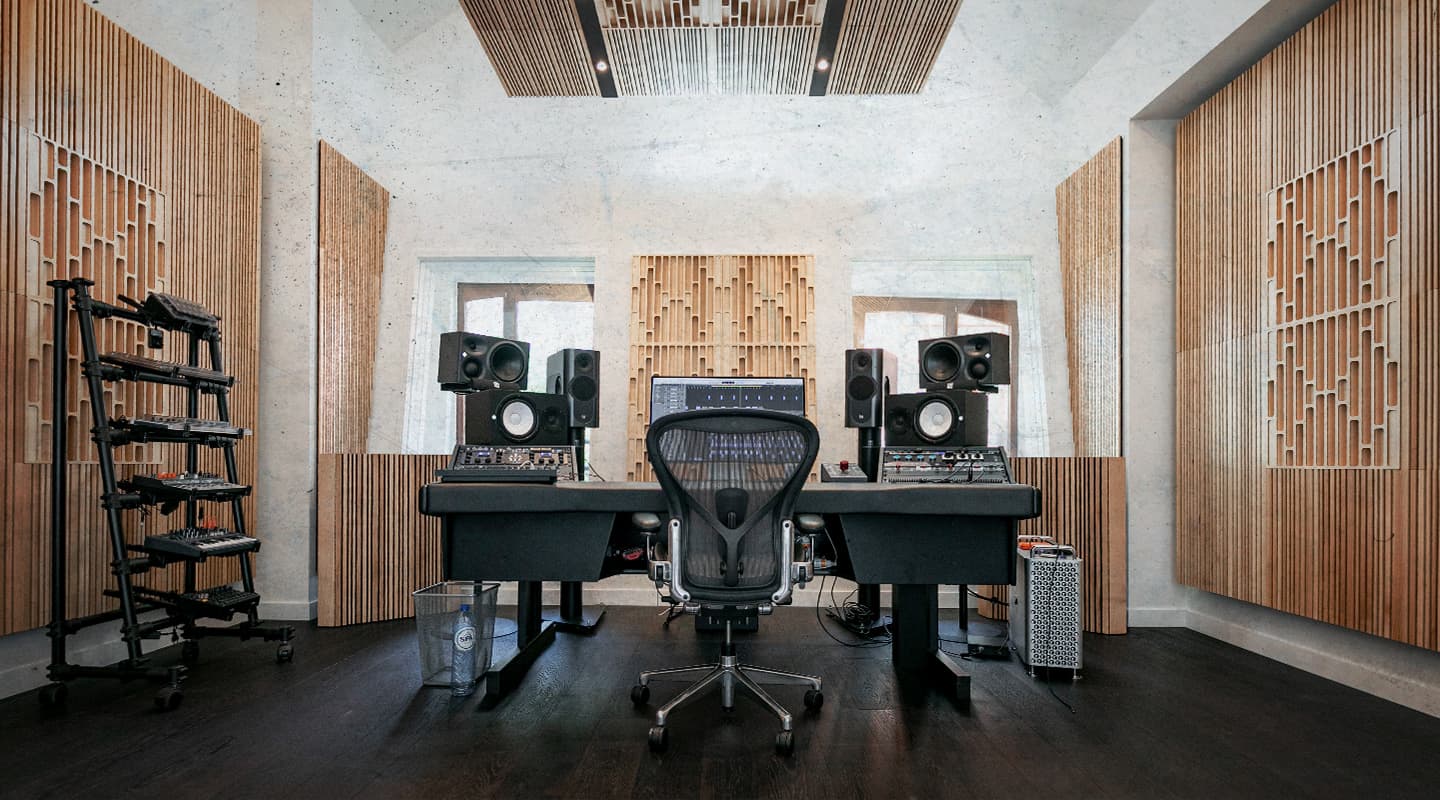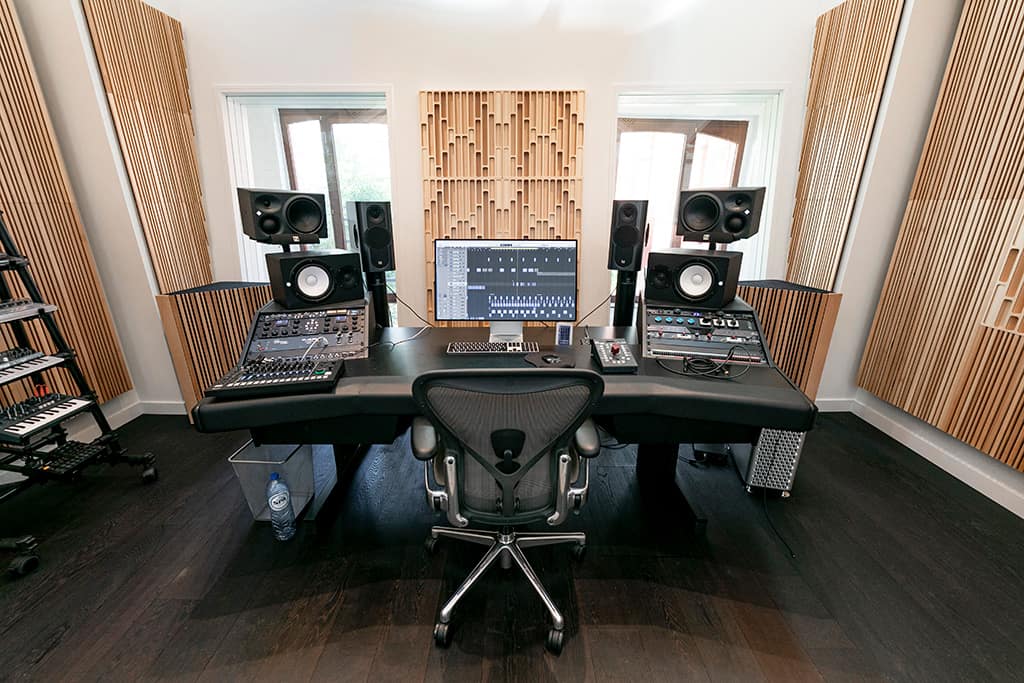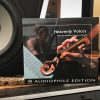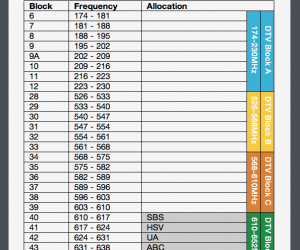
Lost & Found: Lost Frequencies Interview
Felix De Laet, aka Lost Frequencies, welcomes AT into his new studio to hear how he creates his world-beating music.
Felix De Laet is one of the more unlikely pop heroes of the 21st century. Lanky and bespectacled he looks like the ultimate geeky science boffin, and every mother’s favourite son-in-law. In person, the Belgian is unassuming, forthcoming, and well-mannered to a fault. If first impressions are anything to go by, it’s hard to imagine that he’s in fact one of the top artists, producers, and DJs in the world.
De Laet is, of course, better known by his artist name, Lost Frequencies. It’s tempting to spin a story about Lost Frequencies as his alter ego, but in fact, the striking thing is that De Laet looks and acts the same whether as himself or as an artist. There are no masks or strange haircuts or other visual gimmicks, as is common in the electronic music world. The only prop he sometimes uses is a variety of interesting glasses. For the rest, Lost Frequencies is simply De Laet making music.
His breakthrough occurred in 2014 with the hit, ‘Are You With Me’, which went to No.1 in 18 countries, and to platinum in many of them. He scored more hits in the years after that, the biggest being ‘Reality’ (2015) and ‘Crazy’ (2017, with Zonderling). Since then Lost Frequencies has continued to enjoy success with a string of worldwide hit singles, remixes, albums and performances.
De Laet also built a reputation for stellar remixes of tracks by Major Lazer, Justin Bieber, Miley Cyrus, Martin Garrix, Jax Jones, and others. By 2018, he was the most-booked festival artist in the world, with appearances at major events like Coachella, Tomorrowland, and Lollapolooza, and he had amassed two billion streams. 2019 saw the releases of four singles and his second album, ‘Alive And Feeling Fine’, as well as more touring, which included De Laet for the first time performing live on stage with musicians. He also started his own label, Found Frequencies.
SPENDING THE TIME
Then the pandemic hit. Inevitably, it also stopped De Laet in his tracks. While there were five single releases and an EP in the first half of 2020, he did not return back to the fray until March 2021, with the melancholic deep house track ‘Rise’. It features GoldFord singing poignant lines like “it’s been a hard year, feeling the weight now (…) nothing but closed doors.” Many could identify.
While ‘Rise’ was moderately successful, the follow-up single took the world by storm. Released in July of last year, ‘Where Are You Now’, with Calum Scott on vocals, became a major hit in dozens of countries, went to platinum in at least 10 (including Australia), and at the time of writing stood at half a billion streams on Spotify, and 65 million views on YouTube.
Ironically, the song owes its life, in part, to the pandemic. Via Zoom from his headquarters in Brussels, De Laet explained, “For me the pandemic was first of all the discovery of the joy of just being at home. I had been travelling all the time, often being at home for maybe two days, which I then used to finish new singles or work on an album. This was a very rough way to work. So I discovered that I really like being at home.
“The fact that none of my colleagues were touring either, nor were they posting much on social media, meant that I did not feel like I was missing out, and this allowed me to focus on just making music. In fact, for me, the pandemic was a rebirth of the production of music. From that perspective, it was a really nice time for me. Since the pandemic, I take a lot more time when I’m producing.”


TIMBER TIMBRE
The pandemic standstill and lockdowns also gave De Laet the time and space to finally create his own purpose-built studio, and move out of the make-shift home studio that he’d been working in at his Brussels apartment. The result was his spectacular Treehouse Studio, built by the Belgian company AMPTEC, which opened in March 2021. Despite its name, it is not actually built in a tree.
“I’ve always dreamt of having my own studio,” explains De Laet. “First of all to have good and reliable sound, and also to be able to work without disturbing my neighbours, because I live in the city. The new studio is built in an old, typical Brussels town house, in the centre of the city. There’s a small garden, and a terrace, and the studio is in an outhouse at the back, with sunlight coming in, which is nice.”
De Laet and his team have created an Instagram page dedicated to the studio, @treehousestudio.bxl, on which one can admire photos of some of the building work and also of the gear in the studio, including the massive, 49-inch LG Ultrawide screen, some outboard, and an abundance of monitors, keyboards, and acoustic screens.
BOX ’N’ DICE
The presence of all this hardware is quite unusual in a time when in-the-box-setups with just a computer, I/O, and monitors have become the norm. De Laet started out like this, as he explains: “I got into music by playing piano, but I also listened to a lot of electronic music. When I got my first laptop, I started producing music in Reason, and from there I went to Logic. I still use Logic today. I guess I am a self-taught home producer, used to working in the box.
“My first monitors were the KRK Rokit 5, and from there I bought a microphone and then got Yamaha HS7 monitors, which I really like, and which give me a different sound. I then bought a Moog, but I had no idea how to use it. I read the manual, and found that super-fun and interesting. I now have four or five Moog synths, and read all the manuals, and I now work on them in a super-instinctive way.”
De Laet has over the years acquired more and more hardware, and one of his aims in building Treehouse Studios is to create a setup that is tailor-made for them. “I wanted to be able to just plug and play and be able to use everything super-easily. I did not want to constantly remove cables, move things around, plug things in and out, and so on. So now in the studio, everything is connected via MIDI and audio. I can record all the audio straight into my computer. I can also do sound design, record it, and everything goes super quickly. Using hardware in my studio is almost as easy as using a plugin.”
The weirder things get, the more interested I am in buying them, because it means I need to get out of my comfort zone when using these things
HARDWARE EASY
According to De Laet, the hardware in his studio has changed his working methods quite dramatically. “When the pandemic hit, I had much more time and also in my previous studio I started connecting all my hardware and used it a lot more. It’s a completely different approach. I really like the fact that you have to commit to what you record. When you create a distinct sound, it is less easy to recreate, which makes it more unique.
“I also like to be able to play keyboards and use my hands when programming synths. Sometimes I simply hit the Record button, and I will have a super long loop, and I will record myself playing for like 10 minutes. After that I will select what I like and create something different from it. This never happens when I use only software. It is a completely different approach.
“Of course, it’s easy to recreate the same sounds with plug-ins. With plug-ins you can also constantly redo things, constantly adapt, and so on. When you use the hardware, because it takes more effort and more time, you think twice before you decide whether you use a sound or not. And if you don’t use it, you might use it for something else. Using hardware can also be a pain, because everything takes more time, but I get more out of it. It is super fun.
“If I don’t have the time to use hardware, I will just open some plug-ins. The thing is, I know what I want, and with plug-ins I can get it done in a few seconds, when I am doing remixes or last minute treatments of things, or the label wants last-minute changes, I do it with the plug-ins. But when I have the time and I like to be creative and inspired, I’ll be using the hardware.”
MOOG NO. 1
According to De Laet, the Moog One is his favourite synthesizer. “It is my baby. I can do everything with it. It’s polyphonic with 16 voices, and I like the small screen in the middle, which gives a nice visual aid. It’s very intuitive to use, and easy to understand what you are doing when you turn buttons and link stuff. Another favourite Moog is the Sub 37. I’m also fond of the Arturia MatrixBrute, most of all, its distortion knob, it gives me a really different sound. Another favourite is my Sequential Prophet X.”
Other keyboards at Treehouse include a Moog Grandmother, a Roland Jupiter-X, and Moog Sub Phatty. The studio surely will see more, as De Laet explains, “I’m buying tons of stuff at the moment! More hardware is coming in. I put a picture on Instagram recently of my Finegear The Dust Collector unit, which contains two VC LFOs, two tape saturations, a spring reverb, a delay and a phaser. I can mess with the knobs when I send audio through it. The weirder things get, the more interested I am in buying them, because it means I need to get out of my comfort zone when using these things.”
Treehouse also has two racks of outboard, on either side of the central position behind De Laet’s desk. The rack on the right contains a Heritage Audio DMA73 mic pre, a UAD-2 Live Rack, and an Antelope Audio Orion 32+ GEN3 converter. However, it seems that De Laet’s real attention goes to two main units of outboard on his left…
“I love my Wes Audio Next Generation Bus Compressor, which adds really nice harmonic distortion. When I put a Moog One sound through it, it adds really nice, midrange body. But of course, if you later want to recreate that sound, it’s harder to do. I sometimes use the API 2500+ compressor on the stereo output for premastering for radio mixes, but when I do club mixes I’ll send them through the Wes Audio, which gives a more aggressive sound.”
I try to make the one sound as big as possible … because I might get lost in the sound design of it.

TREEHOUSE: BRANCH OFFICE
Concluding his tour of Treehouse, De Laet explains, “I have the Yamaha HS7 monitors here, Kii Three, and Neumann KH310A monitors, with a sub. I use the Neumann’s almost constantly. I only skip to the other monitors when I’m not sure about how something translates. They’re really nice speakers, and with the sub they are great for just vibing. I use the Heritage Audio R.A.M. System 5000 as my monitor controller.
“Oh, and I also have a Neumann U67 mic, which I don’t use as much as I would like, because I now work mostly with famous singers, and they usually like to record in their own studios with their own engineer. By the way, I also still have a basic home studio at my apartment, because all the gear and all the options I have at Treehouse can make it more complicated to create. I can sometimes get overly focused on details — if I need to keep it simple, I go back home.
“At home I have just my first KRK speakers, my laptop, UA Apollo X4 soundcard, and a Roland JU-06A and TB-03. Having just this gear creates limitations and forces me to be creative with what I have. So when I’m stuck, I sometimes go there. I’ll try to get a first idea, and once I have that, I’ll go back to my main studio and go crazy with sound design and things like that. On all my computers I have all my favourite plugins, by FabFilter and SoundToys, Valhalla, and so on.”
MIXING FREQUENCIES
Once De Laet finishes a track, he sends it out to mixer Andres Algaba. “He has mixed all my tracks since ‘Reality’ in 2015. Sometimes he does not change a lot, and he’s more concerned with consistency between all the tracks on an album, so they are the same in terms of volume, dynamics, where the bass and the vocals sit, and so on. Also, when I do a DJ set, everything has to sound like a whole. You can’t have one track with super loud vocals and other with super loud bass He takes care of that, and also makes the stems, so I don’t have to do all that.”
Early June, Lost Frequencies released another single, ‘Questions’ (with James Arthur), and De Laet reveals that he’s “working on an album at the moment. I’m also preparing for the live shows for the summer. I have a drummer, Thibault on guitar, there’s a singer, and I play keyboards. We use Ableton for the live shows. I really like the Ableton interface, but it’s easier for me to create in Logic, so we translate everything that I have in Logic to Ableton for the live shows.
“I’ll be using a Roland Ax Edge keytar, a DJ TechTools Midi Fighter, a Roland Pro 61-key MIDI controller, and also the Sub 37. On the last tour I had the Prophet, but it would detune if it got hot. The drummer has a completely digital kit, which looks analogue, but allows him to use all samples of my tracks. The guitarist also plays a MIDI keyboard. We resample everything so we can get things to sound as close as possible to the original versions.
“It’s a lot of work, but performing live as an electronic act gives me a lot of credibility, as opposed to just doing DJ sets. I also learn a lot in terms of interacting with the crowd. It’s going to be fun. In December we go to Asia, and in January I’m on holiday!”
Clearly, De Laet’s has returned to his pre-pandemic globetrotting days. But his Treehouse Studios is sure to lure him back to Brussels more often than before.

























RESPONSES